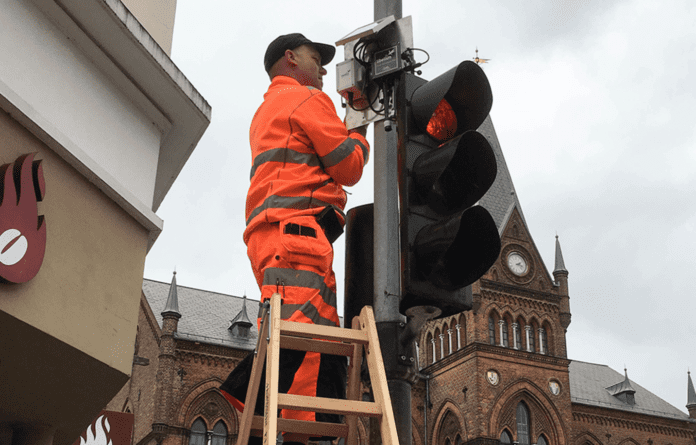Transparency based on open data is another hallmark of a smart city
Reemphasized by the ongoing, United Nations-hosted Marrakech Climate Change Conference, reducing levels of greenhouse gases in an effort to combat global warming is a major priority of world governments. And while smart city discussions largely revolve around clear results like less traffic congestion or easier access to parking, monitoring and control of environmental conditions like air and water quality are also key elements of a smart city.
In Trondheim, Norway, and Vejle, Denmark, Libelium, which produces sensor hardware and software, is working with the Norwegian University of Science and Technology to get a better understanding of how greenhouse gas emissions are impacting the area.
The first step is installation of a sensor network that provides real-time measurements of carbon dioxide, nitric oxide, particulate matter, temperate, pressure and humidity. The sensors send data over a low power wide area network network, which is an “internet of things” connectivity standard championed by the LoRa Alliance.
The technology is designed to enable a gateway or base station to cover entire cities or hundreds of square kilometers. Range depends on the environment or obstructions in a given location, but LoRa claims its network has a link budget, or the factor in determining range of a given environment, greater than any other standardized communication technology. Communication between end devices and gateways is spread out on different frequency channels and data rates. Because it uses a chirp spread spectrum approach, communications with different data rates do not interfere with each other and create a set of “virtual” channels increasing the capacity of the gateway. LoRaWAN data rates range from 0.3 to 50 kilobits per second.
In the two Nordic cities, sensor data is fed into a bespoke app called CTT Urban Overview, which provides network monitoring and data analysis tools. The end result is a comprehensive view of citywide emissions.
Fredrik Anthonisen, technical project manager at Libelium, said the goal “is to provide a city with an automated system for GHG emissions monitoring and reporting, with the requirement of direct feedback of the city’s emissions reductions initiatives.” The next step would be integration of the sensor network tools into the a decision support system.
Libelium CEO Alicia Asín spoke to the open data aspect: “This influx of information can lead to more transparency. If the billions of sensors that populate our smart cities generate open data, we should be able to make decisions based on fact and hold public officials accountable.”

